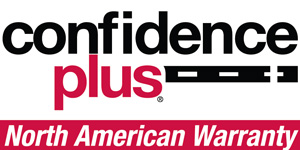Business Hours
- Monday - Friday
- BASHFORD AVE
7:30 AM - 4:30 PM
Phone: (502) 203-0454 - PRESTON HWY
7:00 AM - 4:00 PM
Phone: (502) 230-4279
AMERICAN BRAKE CENTERS INC.
(502) 203-0454 for Bashford Ave or (502) 230-4279 for the Preston Hwy location | 3435 Bashford Ave Ct Louisville, KY 40218
AUTONET TV
Archive for August 2021Hold the Oil! (Oil Pan Gasket Replacement)Posted August 15, 2021 11:09 AMYou've likely heard how important oil is to your vehicle's engine. Did you know that there's one part that's responsible for holding that oil so you can use it every day? It's called the oil pan, and it sits at the bottom of the engine. The oil pan is a vital, though simple, part of your engine's lubrication system. Oil circulates through parts of your engine to keep them lubricated. It reduces friction so everything works smoothly. Without oil, friction would quickly destroy your engine. The oil pan keeps that oil contained in the lubrication system, so it's important that the oil doesn't leak out. Since it's a metal part attached to another metal part, there is a gasket between the oil pan and the part of the engine it attaches to. Various things can put stress on the oil pan and gasket, including weather extremes, the speed you're traveling and the condition of the oil. You may drive over a couple of bad roads and kick up debris onto your oil pan. All this wear and tear, heat and time can take their toll. So after a while, the gasket can just wear out and start leaking. It usually starts pretty slowly. If you see oil visible under your vehicle where you park it, that might be a sign of a leaky oil pan gasket. Another sign? You smell burning oil coming from your engine. If the leak is bad and your engine has lost a lot of oil, you may eventually see the oil light go on. Let your service advisor know if you are experiencing any of these things. Driving with insufficient oil can badly damage your engine. And it can do it quickly. A American Brake Centers Inc. trained technician will check to find the source of the leak. It may just be a gasket, but it also could be the oil pan is damaged and needs replacing as well. This is a repair you should get taken care of. Your engine needs its lubrication system intact to provide you many years of service. American Brake Centers Inc. Will Proper Auto Maintenance at American Brake Centers Inc. Really Save Gas?Posted August 8, 2021 12:01 PMHave you ever thought about all the little things we do to keep our lives running smoothly - like vacuuming? It makes a room feel fresher and more comfortable. We may not consider that we're also prolonging the life of the carpet by keeping it clean. But Louisville drivers don't always extend those good habits into the garage. Our vehicles need regular maintenance just like our rugs need vacuuming. We may not notice a difference in the feel or appearance of the vehicle, but just as cleaning a carpet carries the hidden reward of prolonging its life, maintaining our vehicles incurs a hidden reward that becomes noticeable at Louisville gas stations. Alignment and brake problems can also increase friction. Besides saving fuel, keeping these systems in good repair has the added benefit of saving you on tires and brake pads. These items wear out more quickly when the alignment is off or when the brake system isn't in good working order. Talk to your friendly and knowledgeable service advisor at American Brake Centers Inc.. American Brake Centers Inc.
Not Too Hot and Not Too Cold (Temperature Gauge)Posted August 1, 2021 9:28 AMYou know your body temperature is supposed to be 98.6 degrees F, 37 degrees C. Your vehicle has a normal temperature, too, and if you pay attention to it, that can save you some big headaches down the road. Many vehicles have a temperature gauge on the dash that takes the temperature of the engine's coolant. Some have a thermometer symbol, some read C-H (cold to hot). Many will have a red zone that shows when water temperature is getting into the danger zone. Others are digital and have a red warning light that signals overheating. And some vehicles have a light that goes on when the engine temperature is out of the normal range. If your vehicle has a gauge, pay attention to it. If you need help locating it, ask one of our American Brake Centers Inc. experts to give you a quick explanation. Chances are when the vehicle has been running for 15 minutes or more, the temperature gauge will settle into its own "normal" zone, often just below the midway point. If you have a digital readout, remember what that "normal" temperature is. Here's why. At any point when you're driving, the temperature gauge is the quickest way to get a sense that the engine is running the way it should, a quick health checkup, as it were. Say you're on a 3-hour trip, glance at that gauge every hour or so. It should always be in the same spot. If it starts to move one way or the other, you may be able to catch a problem before it gets serious. Pay special attention to it moving into the hot zone. The needle on the gauge is the easiest and least distracting way to see an engine heating up, but on a digital gauge, start paying attention if the temperature reaches 240ºF/115ºC or more. Remember, though, that just because the gauge reads "hot" doesn't mean your engine is on the verge of burning up. It could be a bad sensor and the engine will be at a normal temperature. But it also could be a failing water pump, coolant leak or thermostat. By pulling off the road and observing your engine, it will give you a pretty good idea if it's running hot or not. If the gauge is too "cold," it could be a broken gauge or thermostat sticking open. Usually being in the cold range isn't as worrisome, but you should have it checked out since other systems may be affected. Heat is one of a vehicle's worst enemies, especially when it comes from within. Know your vehicle's normal temperature and keep an eye on it.
| ||
SearchArchiveJune 2019 (18)July 2019 (4) August 2019 (4) September 2019 (5) October 2019 (4) November 2019 (4) December 2019 (5) January 2020 (5) February 2020 (4) March 2020 (5) April 2020 (4) May 2020 (5) June 2020 (4) July 2020 (4) August 2020 (5) September 2020 (4) October 2020 (4) November 2020 (5) December 2020 (4) January 2021 (6) February 2021 (4) March 2021 (4) April 2021 (4) May 2021 (5) June 2021 (4) July 2021 (4) August 2021 (5) September 2021 (4) October 2021 (5) November 2021 (4) December 2021 (4) January 2022 (6) February 2022 (4) March 2022 (4) April 2022 (4) May 2022 (5) June 2022 (4) July 2022 (5) August 2022 (4) September 2022 (4) October 2022 (5) November 2022 (4) December 2022 (4) January 2023 (5) February 2023 (4) March 2023 (4) April 2023 (5) May 2023 (4) June 2023 (4) July 2023 (5) August 2023 (4) September 2023 (4) October 2023 (5) November 2023 (4) December 2023 (5) January 2024 (5) February 2024 (4) March 2024 (5) April 2024 (4) May 2024 (4) June 2024 (5) July 2024 (4) August 2024 (4) September 2024 (5) October 2024 (4) November 2024 (4) December 2024 (5) January 2025 (4) February 2025 (4) March 2025 (5) | CategoriesWhat Customers Should Know (41)Fuel Economy (6)Tires and Wheels (1)Timing Belt (3)Fluids (3)Maintenance (7)Service Intervals (1)Alignment (4)Check Engine Light (4)Steering (4)Exhaust (5)Shocks & Struts (1)Air Conditioning (4)Brakes (10)Older Vehicles (1)Cooling System (3)Battery (3)Water Pump (1)Oil Change (5)Transmission (2)Tires (2)Customer Detective Work (1)Fuel Saving Tip: Slow Down (1)Fuel System (1)Auto Safety (3)Keys to a long lasting vehicle (2)Windshield Wipers (2)Alternator (2)Automotive News (1)TPMS (1)Headlamps (2)Service Standards (2)Cabin Air Filter (1)Fuel Pump (1)Winter Prep (2)Safety (2)Shocks and Struts (1)Drive Train (2)Inspection (3)Engine Air Filter (1)Dashboard (1)Spark Plugs (1) | |











